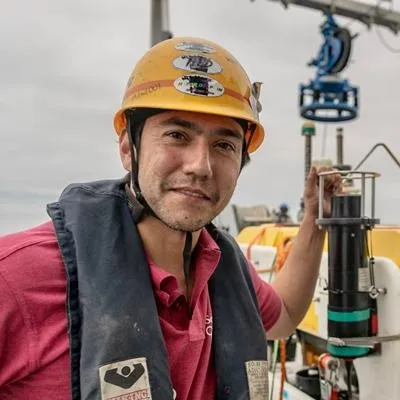Project overview
This fellowship will develop a simple approach to collect large volumes of seafloor visual imagery using fleets of low-cost, passively-drifting underwater robots. Based on the concept of the Lagrangian imaging float outlined in Roman et al., 2011 [1], this fellowship will investigate how seafloor visual observations can scale to enable several orders of magnitude larger regions of the seafloor to be surveyed at significantly lower costs and reduced effort than is possible with today's RAI systems. To achieve this, novel methods will be developed to increase the endurance of these platforms from several hours to several weeks, and enable the location of each platform in the fleet to be determined in a globally consistent way. The images obtained will be packaged into 3D visual seafloor reconstructions along the trajectories taken by the platforms as they drift on near bottom currents. This will provide valuable data for a range of scientific studies and statutory monitoring applications. While the trajectories cannot be precisely targeted, sacrificing the ability to follow predefined track lines allows for a significant reduction in power consumption and can eliminate the need for the expensive sensors and acoustic tracking needed for real-time localisation of RAI systems in the GPS deprived underwater environment. Furthermore, the increased mission duration eliminates the need for daily deployment and recovery using expensive crewed research vessels that put humans in high-risk situations and rapidly exceed the cost of even the most expensive robotic platforms.
To demonstrate this concept, this fellowship will develop a fleet of low-cost platforms that can maintain a desired altitude while obtaining 3D images of the seafloor. Each platform will cost < £5k and have an endurance of several weeks. Novel methods to reduce energy consumption will be developed. This includes a buoyancy control system that can achieve neutral buoyancy at any depth even in regions where the density of seawater is not precisely known. An intelligent, low-power 3D imaging system will be developed together with a hybrid altitude and illumination control system that minimises energy consumption. This will adapt both the frequency at which images are acquired and the strength of illumination used in order maintain a high-quality of data while minimising the amount of energy needed to control the platform's altitude. In order to determine the location of the seafloor images, a novel approach that combines; matched features between sequential images to estimate the motion between acquisitions; seafloor depth observations of all members in the fleet; information available about the terrain and the physics of regional scale flow, will be used to determine the most likely trajectories of each platform. The concepts developed in this research will be demonstrated through a series of experiments carried out under controlled conditions and during field trials using a small fleet of passive drifters that will be deployed at sea.
[1] C Roman et al., Lagrangian floats as seafloor imaging platforms, Continental Shelf Research 31, 1592-1598 (2011)
Staff
Lead researchers
Collaborating research institutes, centres and groups
Research outputs
Miquel Massot-Campos, Francisco Bonin-Font, Eric Guerrero-Font, Antoni Martorell-Torres, Miguel Martin Abadal, Caterina Muntaner-Gonzalez, Bo Miquel Nordfeldt-Fiol, Gabriel Oliver-Codina, Jose Cappelletto & Blair Thornton,
2023, Estuarine, Coastal and Shelf Science, 291
Type: article
